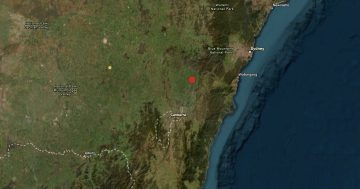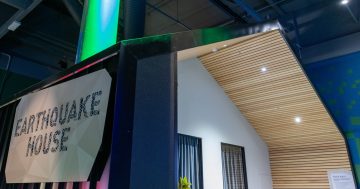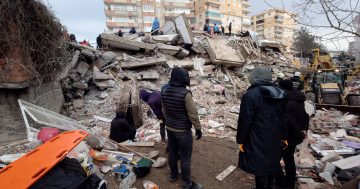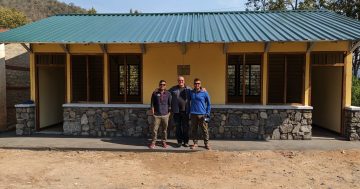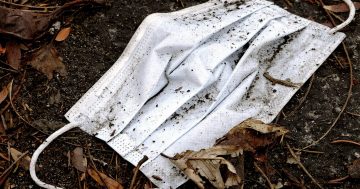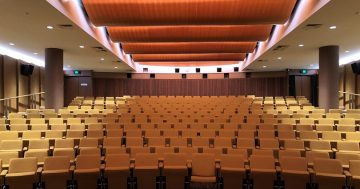
Canberra and surrounds earthquake map. Image: Geoscience Australia.
Residents of Canberra, the South Coast, Geelong and Melbourne have had their mornings shaken up by a magnitude 5.8 earthquake at a depth of 10 kilometres.
According to Geoscience Australia, the epicentre of the earthquake was near Mansfield in Victoria and it occurred at around 9:15 am. It’s believed to be the biggest earthquake in Victoria for a century or more.
#BREAKING Chapel Street, believed to be quake damage. pic.twitter.com/VxU7lCAx35
— Paul Dowsley (@paul_dowsley) September 21, 2021
People from Wagga Wagga, Tumut, Canberra, the South West Slopes and the surrounding region, and the South Coast from Narooma to Ulladulla have already reported experiencing the quake via the Geoscience Australia website. You can see Geoscience Australia’s “felt reports” here.
In Canberra, reports have come in from Braddon, Ainslie, Turner, Kaleen and Deakin among many other areas. Most of these are likely to be in valley floors, where shocks are felt more strongly than on hilltops.
Geologist Marion Leiba says that the quake’s amplitude was too large to be fully measured on her seismograph in Kambah, which also shows two aftershocks.
Marion says that the Newcastle earthquake aftershocks were felt across much of South Eastern Australia, although it was a good deal smaller in terms of energy released. Newcastle was rated a 5.4 magnitude earthquake and past quakes at Gunning and Dalton nearby have been up to 5.5 magnitude. They were also perceived across many areas of NSW and Victoria.
“This one is a lot bigger,” Marion said. “The Continental shelf would get one of this size on average every eight years, but a quake this size in South Eastern Australia is a very rare occurrence.”

Geologist Marion Leiba’s seismograph readout from Kambah. The main quake is at the left with an aftershock around 9:34 am. Image: Marion Leiba.
Australian earthquakes tend to be shallow and at 10 km, this means the breakage in the earth’s crust happened very close to the surface and human habitation. Marion says that larger earthquakes happen relatively frequently in Papua New Guinea and the Solomon Islands, but tend to be very deep.
“They often won’t do much damage if they’re hundreds of kilometres deep. But 10 kilometres beneath the surface is very close and I wouldn’t be surprised to hear reports of significant damage”, she said.
Aftershocks from a large earthquake could go on for days or weeks and Marion said a sensitive seismograph would detects tens if not hundreds of small shocks after the Mansfield quake.
People were quick to take to social media to report their experiences.
In Broulee, whole buildings were said to have moved, while a Victorian resident said she heard a rumbling in the distance before her laptop and desk starting shaking.
“When I looked outside, everyone was standing on their balconies looking scared, too!”
There are some reports of building damage beginning to emerge in Melbourne where inner-city apartment buildings are being evacuated as a precaution.
In Greenway, Julie said the quake “felt as though there was a generator running downstairs for 10 or 20 seconds”, while Nevenka, also in Greenway on the sixth floor of an apartment, said the “building shook and mirrors swayed, cats freaked out and wouldn’t move”.
In Lyneham, Damien said the “5th-floor whole building was swaying side to side, concrete walls were creaking and most things that could had a visible oscillation going on”.
The Bureau of Meteorology has confirmed there is now no tsunami threat to Australia.
Did you feel the quake too? Share your stories with us.












